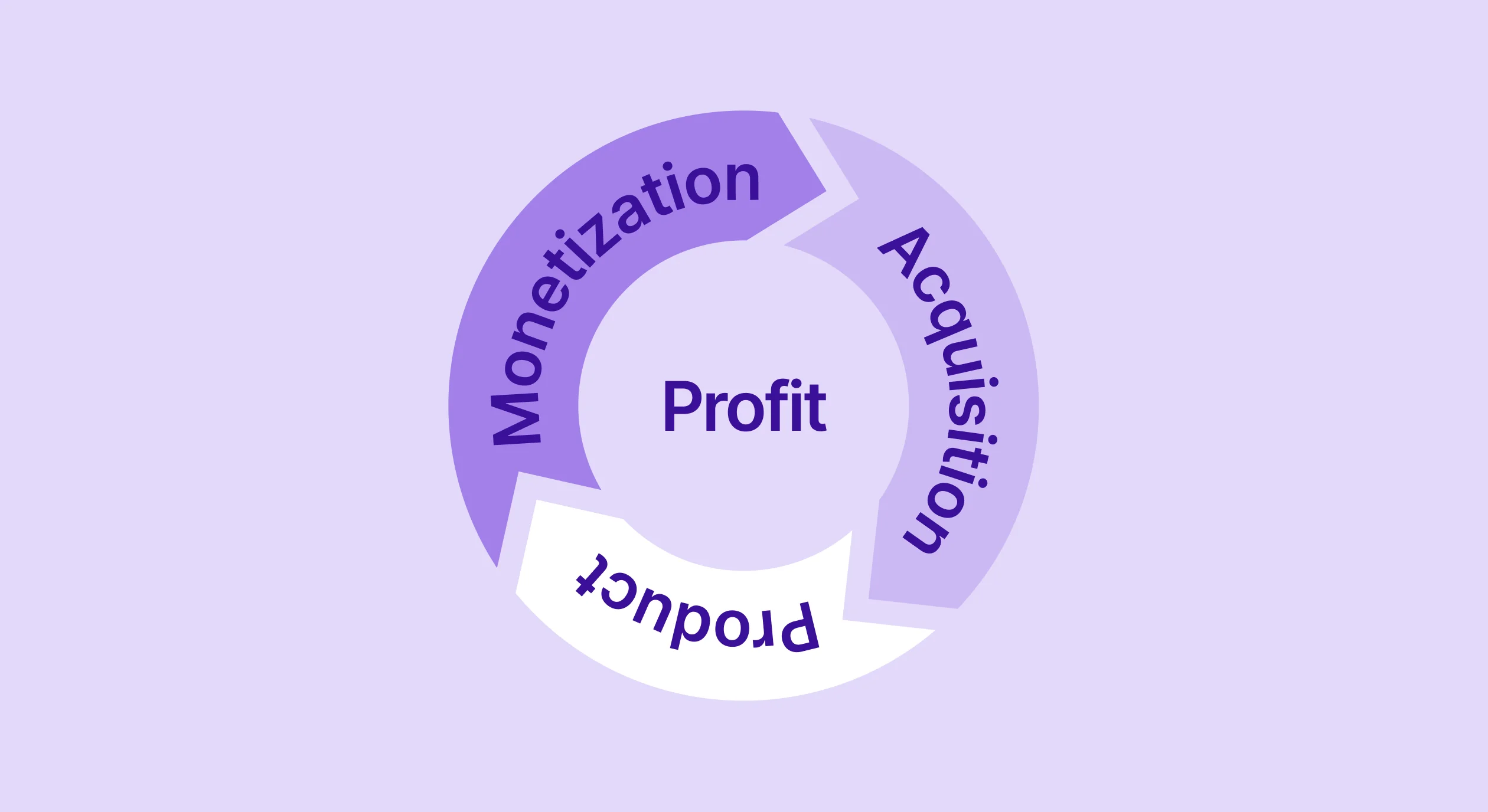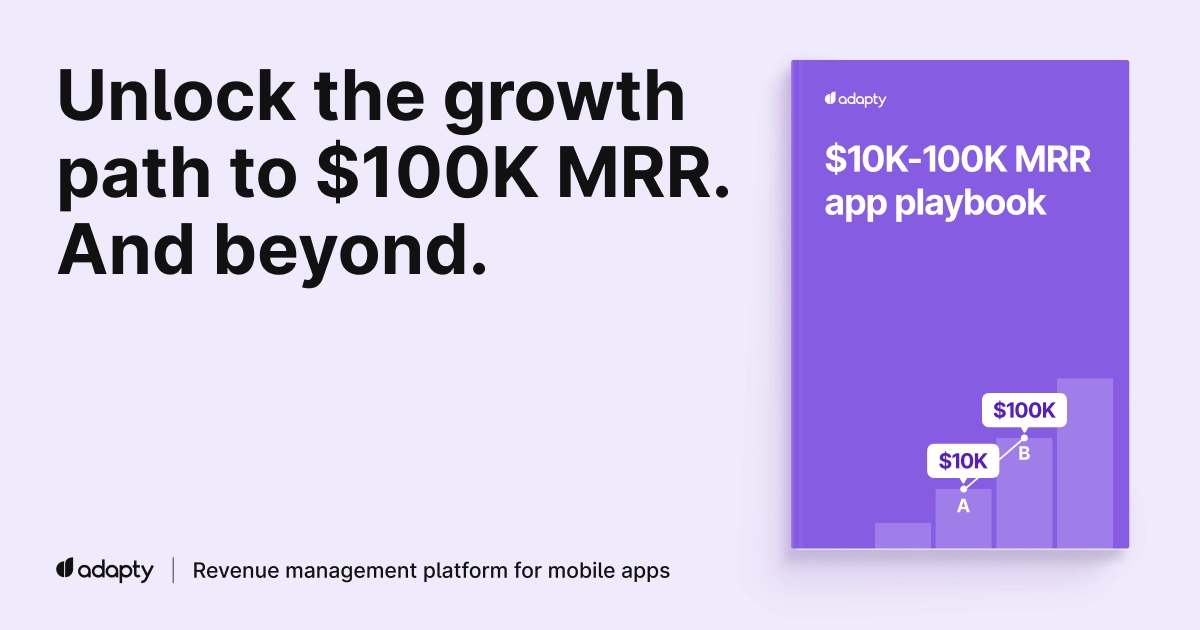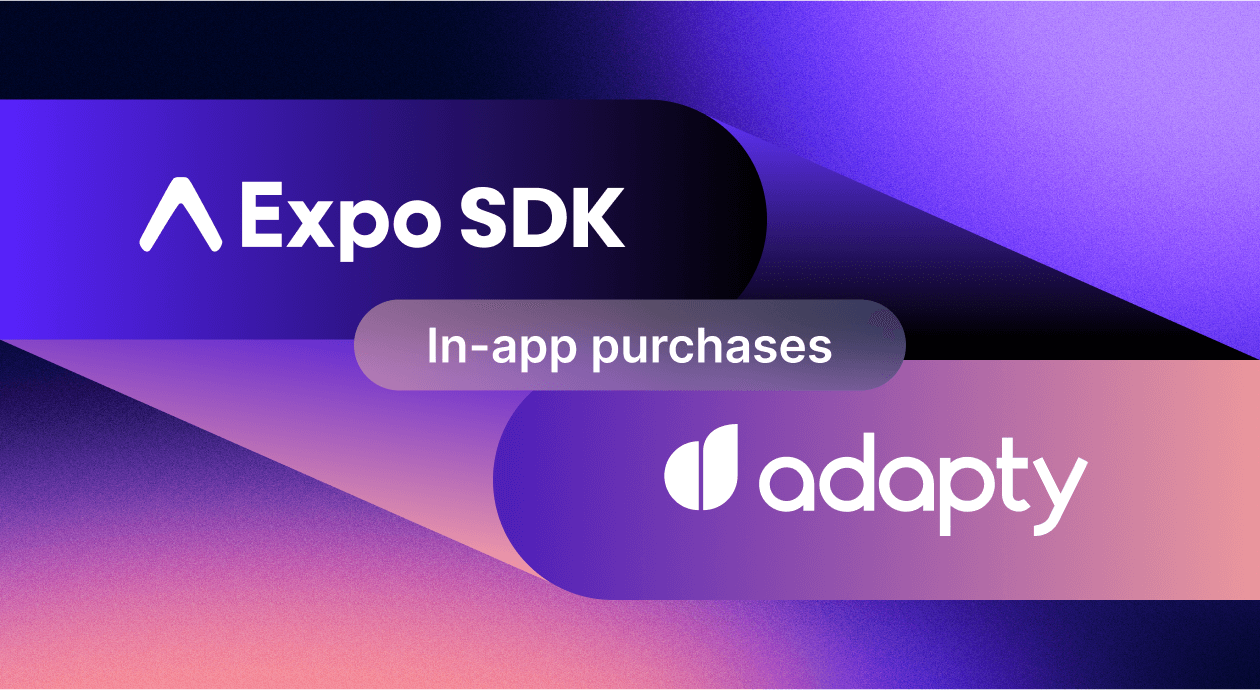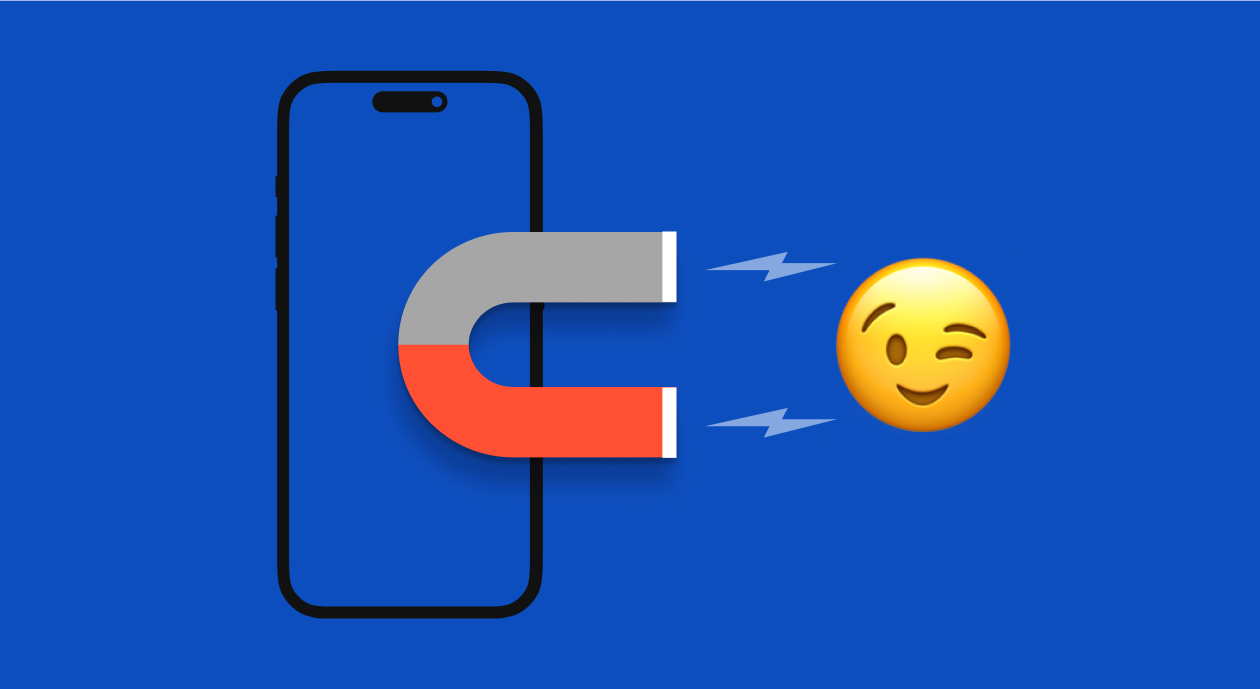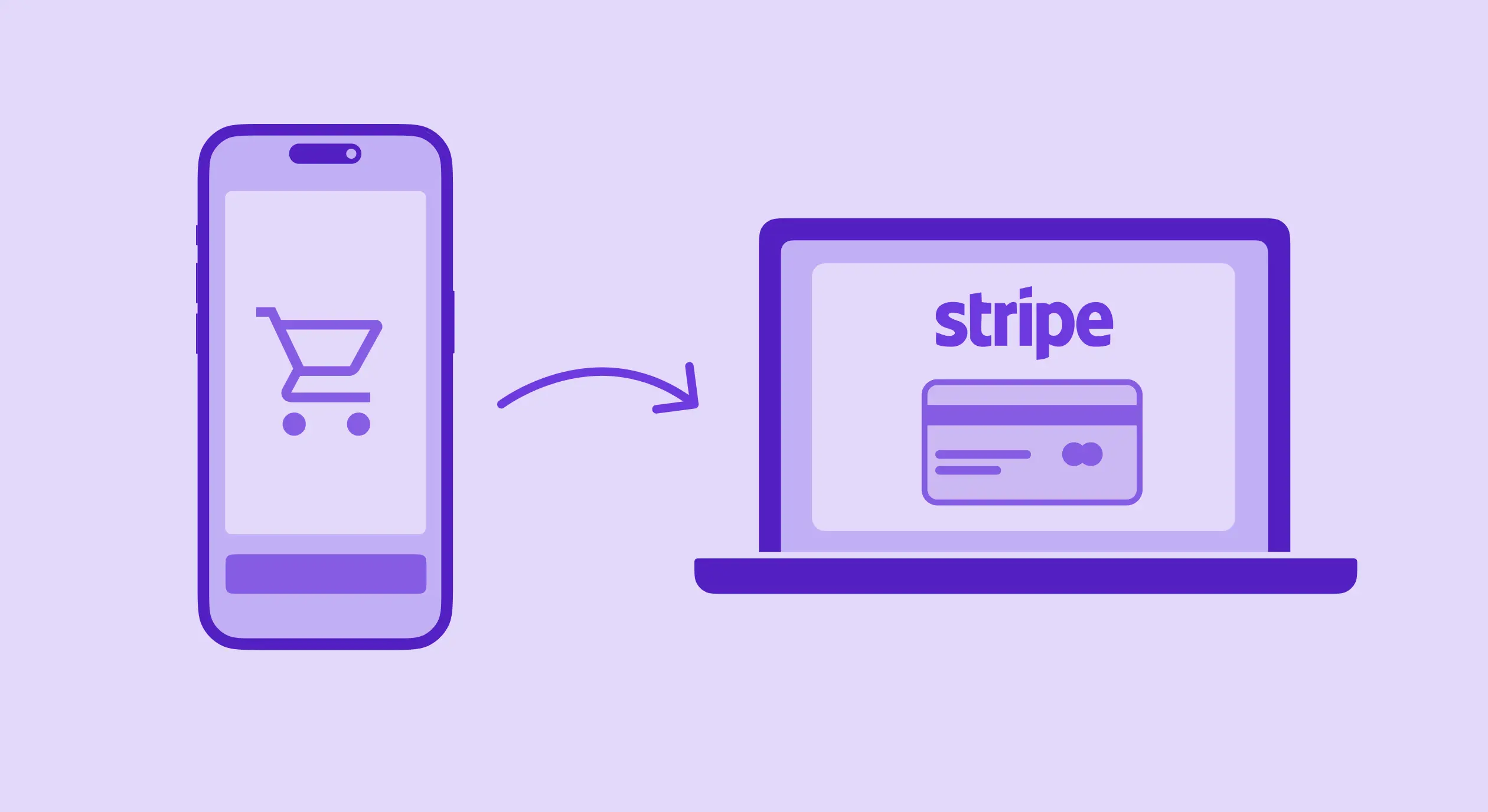This article is based on a podcast with Daniel Layfield (the Subscription Index) and Ben Gholke (Adapty.io) and was written on behalf of Daniel.
A lot of early-stage teams get stuck in the same place: people are using the product, feedback is good, usage looks healthy, but revenue doesn’t follow. And when you try to fix that, it’s easy to get lost in pricing tweaks, freemium debates, or half-baked growth loops that don’t deliver.
I’ve been through this while running the growth team at Codecademy – back when we had millions of users but very little revenue. Over five years, we figured out what works, scaled ARR from $10M to $50M, and later sold the company for over $500M. Most of that journey was about aligning monetization with product and usage.
In this article, I’ll share what I’ve learned about reaching product-market fit, when to start monetizing, how to avoid common traps, and what metrics to track. If you’re building a subscription app and trying to make it sustainable, I think this will save you time and help you focus on what matters.
Why should product-market fit come before monetization?
The biggest mistake I see early teams make is start optimizing monetization before they’re confident they have product-market fit. And I get it – you want to start earning, prove traction, maybe even raise money. But if you try to capture value before you’re sure you’re delivering it, it just slows everything down.
At Codecademy, we didn’t go all-in on monetization until we felt a real pull from users. Not just usage, but retention, feedback, and willingness to pay. One of the tools we used was the Sean Ellis survey. You ask users: “How would you feel if you could no longer use this product?” You want at least 40% saying “very disappointed.” That’s a strong sign you’re solving a meaningful problem.
Don’t forget to make the survey statistically significant: you need about 200 filled out surveys, which means sending the form to ~4000 people to get a 5% completion rate.
Another method I like is looking at retention curves. If you chart cohorts over time and the line flattens instead of trending toward zero, that’s another good signal. And honestly, even just seeing revenue grow steadily month over month can tell you a lot, especially if you haven’t touched pricing or UA.
Pro tip: Don’t wait for perfect data. But don’t start building paywalls and pricing tiers until you’re confident people would actually miss your product if it disappeared.
How do I set a price for the subscription app?
In the early stages, you’re pricing to learn rather than to maximize revenue. The whole point is to get a signal: is this solving a problem that’s meaningful enough for someone to pay for?
That’s why underpricing can be just as dangerous as overpricing. If you charge $1 for something that should cost $20, you’re not testing whether people value the product. You’re just testing whether they’ll say yes to a no-brainer deal.
On the flip side, pricing too high too early can give you a bunch of false negatives. People might pass not because they don’t need your product, but because the price doesn’t match the trust level yet.
At Codecademy, we found the sweet spot was somewhere in the average range for our space – not premium, not discount. The signal we wanted was simple: are the right users willing to pay something that feels meaningful to them? If the answer is yes, you’re heading in the right direction.
Pro tip: Price high enough to make users think, but not so high that it blocks everyone. You’re not setting pricing forever — you’re just trying to figure out if there’s a business here.
What are app monetization requirements?
Once you start thinking about monetization, it’s tempting to treat it as a separate layer you just bolt on. In reality, monetization only works when it’s in sync with how you acquire users and how they actually use the product. Sustainable growth comes from aligning all three: acquisition, product, and monetization, and making sure each one feeds the others.
In the early stages, you should always start with the product. But it’s not enough to just build something good, it has to be distributable. That’s what Reforge calls a channel-product fit. If you can’t get the product in front of the right people through a scalable channel, it’s going to be hard to grow, no matter how valuable it is.
We made this mistake at Codecademy more than once – trying to build referral loops when our average user didn’t actually know that many other people, who wanted to learn to code. Word of mouth and SEO worked better because that’s how people were already discovering us. The key lesson – don’t waste time over-optimizing tactics that don’t match your audience or your scale.
Pro tip: Most growth-stage apps have one channel doing 80% of the work. When you find that channel, double down on it, and don’t try to make five others perform equally well.
What to avoid early in app monetization?
One of the biggest mistakes I’ve made and seen other teams make is adding too much complexity too early. You may think you’re “leveling up” by introducing new pricing tiers, region-based logic, or clever growth mechanics. But the truth is: every new feature becomes a future tax on your team.
At Codecademy, we tried launching things like referral systems and multi-tier plans way too early. Some of it looked smart from the outside, but most of it either underperformed or slowed us down. Worse – it cluttered the product and made every future experiment more expensive to run.
Here are a few common traps I’d avoid in the early stages:
- Multiple pricing tiers. Sounds powerful, but it fragments your user base and slows onboarding. Most B2C apps that scale start with just one plan.
At Codecademy, we stayed with a single-tier product for over 10 years. Same with apps like Headway and Calm – both still keep things simple with one core pricing tier.
- Geo-based pricing. The second you go down this road, you multiply the complexity of every page, every email, and every ad. Only do it if you’re already seeing strong international traction and have a team to support it.
- Copying your competitors. This one’s tricky. We shipped things at Codecademy that didn’t work, and saw competitors copy those exact same things months later. Just because it’s live doesn’t mean it’s working.
Pro tip: Keep it boring. A strong single plan, clean onboarding, and a simple funnel will take you way further than half-tested “pro” features and region hacks.
When should you monetize your app?
Once you’re past the early validation stage, measurement becomes your main lever. But most teams either track too much or track the wrong things. The goal is to focus on a small set of metrics that tell you whether your product is working.
I’d start with just a few core indicators:
- Trial starts. Is the top of your monetization funnel alive?
- Activation. Are users experiencing value early enough to stay?
- Paid conversions. Are you turning free into paid efficiently?
- Retention and churn. Not just raw numbers, but segmented by cohort, persona, or channel, and split into voluntary vs involuntary churn.
The mistake I often see (and I’ve made) is over-relying on vanity metrics like MAUs or downloads without tying them to outcomes. Someone logging in once a week isn’t the same as someone paying you every month. Measure behavior that correlates with value and revenue.
And maybe most important: shipping fast doesn’t equal progress. If you’re not measuring the impact of what you ship, you’re just moving faster in the wrong direction.
Pro tip: Most teams try to reduce churn at the end of the journey, but in subscription apps 80% of users decide within the first day whether the product feels worth paying for.
How to reduce churn in the subscription app?
One of the highest-ROI things you can do after monetization starts working is to stop losing money you already earned. Especially when it comes to involuntary churn: failed payments, expired cards, etc.
If you’re on Stripe or a similar provider, your default retry logic probably isn’t doing enough. At Codecademy, we saw a meaningful lift just by switching to machine-learning-based retries – tools like Stripe’s Smart Retries, Recurly, or platforms like Butter and Churnkey. These systems learn when users are most likely to have funds available, so they time retries more effectively.
Also: don’t ignore the emails. A default failed-payment message might get ignored, but if you spend even an hour customizing the copy, explaining the value, and removing login friction, you’ll save users that would’ve otherwise slipped away.
Now, if you’re using in-app purchases via Apple or Google Play, you won’t have as much control. But some tactics still apply: you can detect failed renewals, follow up with personalized emails, or nudge users back into the product with value-first messaging.
Pro tip: Involuntary churn often eats 3-5% of MRR every month. Fixing it doesn’t require a big team, just better defaults.
How to win back users with one simple flow?
You’re not going to save everyone who hits “cancel”, and that’s fine. But you usually get one shot to win them back. And if you use it well, it can be a surprisingly high-ROI moment.
At Codecademy, and in a lot of apps I’ve worked with since, the most effective cancellation flows share the same logic: ask why they’re leaving, then offer something that fits.
Here’s what usually works:
- Too busy? Let them pause instead of canceling.
- Too expensive? Offer a temporary discount.
- Not using it? Downgrade them to a lighter, hidden plan.
Apps like Zoom and The New York Times do this really well. These offers don’t show up on the main pricing page. They’re only revealed after the cancellation intent is clear.
And yes, let’s be honest – this is a band-aid, not a core growth strategy. But it’s a useful one. If someone’s already convinced to leave and you can keep 5–10% of them with a single, simple offer? That’s worth doing.
Pro tip: Just like retry emails, cancellation flows don’t need to be perfect. Even a pause or 2-month discount can buy you another shot at retention later.
Why are annual plans better than monthly?
If you’re working on a subscription app with a short lifecycle, like fitness, education, or productivity, annual plans are one of the easiest ways to boost LTV without changing the product.
We leaned heavily on this at Codecademy. Our average retention for monthly users was around 3-4 months. So instead of pricing the annual plan at 12x monthly, we priced it closer to 4-5x, just above the average retention. That made the annual plan look like a deal and gave us more upfront cash to reinvest into growth.
Apps like Calm and Headspace do the same thing. When you see an annual plan that’s “70% off” the monthly, what’s really happening is: they know most people don’t stick around past month four, and they’re capturing extra value before that user churns.
Just make sure to communicate it clearly. Instead of saying “Save 50%,” show the actual amount of money they’ll save:
- Monthly: $12.99
- Annual: $69.99 (Save $86)
Pro tip: Price your annual plan just above your real average retention. You’ll boost LTV, reduce churn, and make your pricing look like a win for the user.
How to find and monetize highest-value users
You don’t want just anyone using your app, you want the kind of users who stick around, pay, and get value. The problem is, most teams don’t know who those people are until it’s too late.
At Codecademy, I wish we had started tracking user personas earlier. Over time, we realized that people learning to code “just for fun” didn’t stick nearly as well as those trying to change careers or level up professionally.
The product wasn’t worse for hobbyists. It just wasn’t urgent for them. That difference showed up in our retention, conversions, and LTV.
The earlier you can collect this data (ideally during onboarding) the more it can shape everything that follows:
- Your acquisition strategy: attract more of the right people
- Your onboarding flow: tailor it to their motivation
- Your pricing and plans: align with their willingness to pay
Even a single survey question (e.g. “Why are you using this app?”) can unlock insights you’ll use for months. And if you don’t do it early, it’s incredibly hard to retroactively figure out who your best users were.
Pro tip: You don’t need a 10-part quiz. One onboarding question tied to churn and LTV data is often enough to steer your entire growth strategy.
TL;DR: Your monetization readiness checklist
Here’s what you need in place before scaling monetization in a subscription app:
- Real product-market fit. Use the Sean Ellis survey and retention curves to confirm it.
- Pricing that gives you a signal. Not too low to distort, not too high to repel.
- One simple monetization flow. Avoid early complexity like feature-based tiers or geo-based pricing.
- Acquisition, product, monetization aligned. Don’t optimize one in isolation.
- The right metrics. Focus on trial starts, activation, conversions, and cohort retention.
- Churn defenses. Fix involuntary churn with smart retries and better emails.
- One good cancellation flow. A pause or discount can save 5–10% of users.
- Annual plans. Price them just above real retention to boost LTV.
- Persona tracking. Know who stays, pays, and why, and build around them.
Final thoughts
The hardest part about building a subscription app is knowing what to do and when. I’ve seen apps that jumped into monetization too early and burned out. I’ve also seen teams over-optimize a funnel before even knowing if they had something people wanted.
The takeaway – don’t skip steps.
If you’re solving a real problem, people will pay.
If you understand who your best users are, you can grow.
And if you stay focused, you’ll build something that lasts.
Daniel on Linkedin: Dan Layfield
Founder, The Subscription Index

